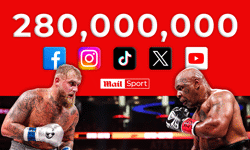The ability of the technology to engage paying consumers with compelling content - and to deliver the targeting and measurable results that advertisers want – could well be the saviour of magazines. And, although it’s still early days, there are signs that even though technology adds to the competition from outside traditional media houses for eyeballs and loyalty, it’s also opening doors to publishers to become e-tailers and providers of services that go well beyond words and pictures on a page.
It’s hard to believe that Apple’s iPad launched in the UK less than two years ago, followed closely by a slew of tablet computer offerings from rival electronics brands. Even before the Christmas flurry of sales, Ipsos MORI reckoned that 6% of the population had a tablet in their home. Mintel reports that among households with an internet connection, almost one in 10 have a tablet. The devices are often shared between family members, not just between partners but also children; in fact, consumers with children are twice as likely as those without to use a tablet computer. Smartphone penetration, meanwhile, is up to about half the population and growing. The launch of Kindle Fire in the UK – thought to be coming in early 2012 – is expected to be another game changer.
As these devices blur the boundaries between what we think of as television, websites, radio and publications, it’s pretty much universally accepted that what’s really in demand is quality, targeted content – whether that’s pictures, stories, video, special offers or tools, or all of the above. And quality, targeted content is what publishers are good at. Yet moving into this new world of opportunity means investment and risk, and making big decisions early on about what to offer, where to offer it and how to fund it. Publishers are, therefore, tempering their excitement about what’s possible by first setting out to see what’s doable – and profitable.
Small steps
“The investments we’ve made are moderate,” says IPC Media’s digital director, Neil Robinson. Rather than pick one delivery platform and committing the entire stable to it, IPC is trialling several and seeing what works. “Picking vendors is extremely difficult at the moment because, arguably, there are many, many people out there saying ‘we can do this’, and there aren’t a large number of case studies,” he says. The idea is to make small steps into the mobile digital world before trying to achieve significant scale.
Future Publishing is pushing into this area with a twin strategy of pursuing quality on one hand, and quantity on the other. Editor in chief of iPad and tablet editions, Mike Goldsmith, says a technology title such as T3, and the glossy Guitarist magazine, are perfect fits with what the technology of mobile and tablets can do, with lots of interactive HD video features and amazing pictures.
BBC Magazines started with two titles – Good Food and Focus – on iPad. Other magazines are due to launch in January and February, and smartphone editions are also in the pipeline. The learning curve has been steep, says Rebekah Billingsley, publisher – mobile devices – at the company, which late in 2011 relaunched as Immediate Media Co.
Good Food, for instance, launched with two how-to videos in each edition on iPad, but has since reduced that to one, given lower-than-expected viewership. Two more titles were due to launch in the New Year, produced by the same teams as produce the printed magazines. “We used their intuitive understanding of what they felt consumers would expect from the platform, (then) analytics to understand how users consume, and honed the product accordingly.” The publisher is ready to roll on Android too, but is waiting for usership to hit a critical mass. It’s also looking to Kindle Fire as a new opportunity to reach out to a slightly more mainstream audience.
Choosing which technology provider to work with is a critical decision that must be made early. Billingsley said they saw every platform provider before going with PressRun, someone they’d worked with before and felt really understood the mobile market. Another draw was the small file sizes produced and the fact that staff used to InDesign could be trained in half a day to manage this new work.
At Dennis, it’s been a year of investment in new formats, though some are already making money. Viz for mobile has turned a profit just two months after launch. Dennis Interactive has all its titles available as page-turning PDFs for the iPhone and iPad, and is experimenting with other features. A Ladies Fitness app was launched in December, and Evo on the iPad combines existing content with lots of video, engine sounds, extended picture galleries and 360-degree photography. Commercial and retail director Martin Belson says one of the main challenges has been not to over-deliver, bearing in mind that the most time consumers are likely to spend on a tablet in one sitting is about 40 minutes. Having said that, though, when Evo readers were asked whether they wanted a smaller file with less video content but a faster download, 80% wanted not less video but more.
Leaving behind the printed page is a tough mental wrench, however. When years have been spent perfecting designs and features for hard copy, IPC’s Robinson says it’s very easy to fall into the trap of subconsciously trying to do the same thing in new formats. Also, whereas a magazine might be overhauled every few years, on mobile and tablet, rejigging is needed every few months, if not more often.
The price is right
Pricing is another tricky piece of the puzzle to get right. Apple users especially have demonstrated a willingness to pay for services they see as providing value. Magazine readers do object when asked to pay the same price for a digital mag as they would for the hard copy, feeling cheated because the publisher is making obvious savings on printing and distribution that they’re not passing on. But cheaper isn’t necessarily better. Billingsley says they tried halving the price of one of their digital products, but saw only a 10% lift in sales.
There are opponents to Apple’s dominance of the online world, particularly when it comes to paid apps – with their demands for a cut of sales and control over buyer data. But the launch in October of Newsstand, an Apple online destination that lets consumers access all their digital newspapers and magazines in one place, has been a boon for established publishers, whose well-known titles tend to chart well in best-seller lists and are easy for people looking for niche products to find. While publishers have to share the spoils, the subscriber numbers that Newsstand is delivering far outweigh the fact that takings are split. And, Goldsmith points out that it also helps differentiate in-depth, magazine quality content – and justify higher prices – from cheap one-off downloads.
Before Newsstand, if Future had wanted to do a PC Game app, it would have been sold alongside games like Angry Birds at 69p a pop, and a photography title would have been beside £1 downloads like Instagram. The publisher had all its titles on Newsstand from day one, and there have been some surprise hits. Comic Heroes (at £4.99 per issue on the iPad compared to £7.99 for the hard copy) has gone through the roof; they’re now scrambling to get back issues uploaded.
Convincing advertisers to move into new territory with small – albeit high-end – audiences, has been tough. Billingsley says they were slower to get on board than they had anticipated, so they’ve started making clients’ press ads interactive for a nominal fee, and giving them comprehensive ROI data, to encourage them to cross platforms. IPC’s Robinson points to the potential value of going digital for advertisers, given that it can lead directly to an online sale, but agencies are unsure how to assess the value of digital pages.
New market value
Mobile and tablet publishing makes testing and launching in new territories a great deal easier and cheaper than printing and distributing hard copies with newly signed partner organisations. The low cost of failure means titles can be tested, tweaked and turned on and off in new markets all in a matter of days. Of course, it opens the doors to digital publishing to a whole new range of potential competitors.
“Two boys in a bedroom right now could be building the best film magazine the world has ever seen,” notes Billingsley. “One of the key challenges for us is that creating a magazine just became something anyone can do. E-commerce companies are going to enter the market distributing free magazines ... but there’ll also be a lot of rubbish out there to wade through, and so our brands will continue to stand out.” Web-only or tablet-only titles aren’t necessarily marked out by small budgets and one-man-bands; the competition in this space includes Rupert Murdoch’s the Daily, available to readers on a range of subscription deals from daily rates to an annual fee, reportedly launched with an initial $30 million investment.
But well-known magazine brands are also finding they can tap entirely new revenue streams by expanding into fields quite apart from publishing. Gaming is an obvious area of potential for brands reaching consumers on tablets and mobiles. Condé Nast has even done away with the word “publications” from their offices and business cards, signalling the way forward. Their Santa’s Hideout site and iPad app was launched to help children and their relatives create and maintain Christmas wish lists, with e-commerce handled by Amazon and the “publisher” taking a cut of sales.
The ability to develop great ideas for quality content, without the constraints of a print run, long lead times and the need to do it again next month, has freed magazine talent to pursue new consumers and develop stronger bonds with existing ones. In addition to iGizmo, Dennis has the online motoring site Carbuyer.co.uk, which although it shares some resources with the Auto Express magazine and web effort, is a standalone brand, as is IPC’s Good to Know site for women. And Dennis title Men’s Fitness sold an app that combined video and text called “Jelly Belly to Abs of Steel” to about 18,000, paying £1.49 each.
Uncharted waters
The buzz of being a pioneer in new media is proving – for publishers generally and for many individual veterans of the printed word – hugely exciting. Daily reports on who’s reading, watching and downloading what is providing not just fantastic insight into what works, but also a massive boost to morale and incentive to make every tweak count in an industry that’s grown used to shrinking circulations and monthly sales reports. In many ways, the question of whether mobile, web or tablet reading cannibalises sales of the printed product becomes irrelevant; as long as people are still consuming the brand and are willing to pay for that engagement, then publishers, by whatever name they decide to call themselves, will be in business.
“They said Teletext was going to kill newspapers; that hasn’t happened,” says Belson of Dennis Interactive. “Apps will find a place.”
Future’s Goldsmith says the traffic isn’t all going in one direction, and web success can open doors to new projects in print. The TechRadar website has been spun into several print buying guides, for instance. The benefit of being online as well means it’s far easier than before to gauge how much, how often and in what formats – not necessarily one or the other – consumers want content. “It’s our job to figure out what people want to buy,” he says. “We should absolutely exploit the opportunity to go out and see what people want.
“There’s no manual for this, no one’s ever done this before. But it’s really fun writing the manual, and it’s full of blank pages.”










